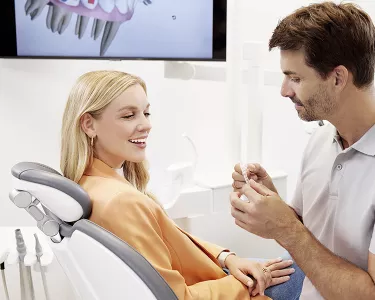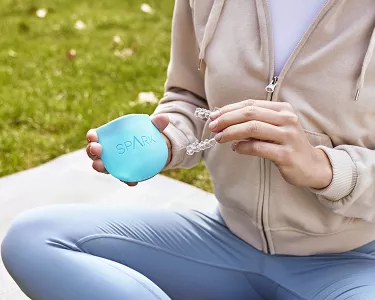How Long Do Clear Retainers Last? Plus a Comparison with Other Types

Orthodontic retainers are often confused for aligners. While different, they are related. After adequate tooth movement has been achieved through orthodontic treatment such as an aligner, an appropriate retainer will help to maintain teeth position for a period of time. Retainers ensure that the position of your teeth is preserved even after you have completed orthodontic treatment and have aligners or braces removed.
However, before you run off with your retainer prescription in hand, it’s imperative that you understand not all retainers are created equal. How long your clear retainers will last will greatly depend on the type you choose. The type of retainer that you have determines how and when you should wear them to ensure optimum fit and cause minimal discomfort.
When it comes to longevity, the truth is, it varies from patient to patient. That’s because every case is different and some patients are more diligent than others when it comes to wearing and taking care of their retainers.
Bonded or Fixed Retainers
A fixed retainer is made from solid or braided wire and is cemented onto your teeth during your treatment. These types of retainers are used for teeth that have higher chances of relapsing after treatment. They are held in place by wires or brackets, which are bonded to the teeth on either side of your mouth. This type of retainer is worn full-time after you finish wearing braces or aligners and only your orthodontist can remove it.
Fixed retainers can last as long from a year up to five years (even longer), depending on how well you take care of them. Being permanently bonded also has other implications. Since you won’t be able to remove them yourself, oral hygiene is more challenging and risks buildup of bacteria that can cause plaque. The more time you spend wearing the bonded retainer, the greater your risk for tooth decay and gum disease.
Removable Hawley Wire Retainer
When dentists talk of retainers, a removable Hawley wire retainer is the one commonly recommended. It consists of a base plate (acrylic or plastic) that fits over the roof of your mouth and a wire that loops around your frontal upper teeth. While removable, the retainer – like aligners – should be worn for extended periods for the best results.
A removable Hawley wire retainer should last for a long time, about three years after braces are removed, before it needs to be replaced. Its fit can also be adjusted, and it is more durable than clear retainers. However, it is more noticeable than other types and the wire can be irritating when starting out.
Removable Clear Plastic Retainer
Made from a clear plastic material that fits over your teeth to keep them in place, they are very easy to wear because they don’t require any adhesive or special tools. They are plastic trays that come in various sizes and shapes, but they all work like an invisible retainer that has more flexibility than metal wires and brackets, to bend and fit comfortably in your mouth, which makes them less noticeable when you talk or smile.
They’re removable, so you can take them out when you eat and brush your teeth. The downsides? Clear plastic retainers don’t last as long as other metal retainers because they can break down faster with repeated wear and tear in the mouth. They are not adjustable as well if you need realignment and should cracks form, repairing them is not an option.
Signs that Your Retainer Needs Replacement
- You notice cracks in the material or seams of your retainer where they were once smooth. These cracks happen when the biting forces from chewing are too strong for the plastic material used to make them.
- Your retainer has lost its color or has become discolored over time due to exposure to different chemicals in the mouth (such as food) or due to poor cleaning habits (such as not brushing after meals). This is often the case with clear retainers where transparency doesn’t last long and the change is likely to be more visible over time.
- Your retainers have become loose. This can happen over time or quickly, depending on how often you wear them.
Knowing how long clear retainers last, the differences among types, and how to care for your retainers after aligner treatment, will help you achieve optimal results when it comes to maintaining your healthy smile. What's more, the right retainer is equally as important as their proper use.
Consult your orthodontist and make sure that you choose the right kind of retainer for your specific orthodontic needs.





